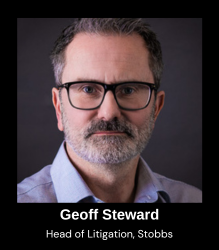In the recent decision of Iconix Luxembourg Holdings SARL v Dream Pairs Europe Inc & Anor, Mr Justice Miles held that the logo of footwear manufacturer Dream Pairs did not infringe Umbro’s double diamond logo.
![]()
 The owners of the Umbro brand had argued that the Dream Pairs logo was confusingly similar to the Umbro marks and also took unfair advantage of their reputation. The key focus of Umbro’s claim was on Chinese manufacturer, Dream Pairs’ football boots and other active footwear, but also extended to any footwear (e.g. women’s Chelsea boots) bearing the Dream Pairs logo. Mr Justice Miles dismissed Umbro’s claims in their entirety.
The owners of the Umbro brand had argued that the Dream Pairs logo was confusingly similar to the Umbro marks and also took unfair advantage of their reputation. The key focus of Umbro’s claim was on Chinese manufacturer, Dream Pairs’ football boots and other active footwear, but also extended to any footwear (e.g. women’s Chelsea boots) bearing the Dream Pairs logo. Mr Justice Miles dismissed Umbro’s claims in their entirety.
The judgment provides a succinct overview of the law applying to trademark infringement claims under s.10(2) and s.10(3) of the Trade Marks Act 1994 and, in particular, discusses the role of context in point of sale confusion for s.10(2), and the importance of adequate pleadings and evidence when making out a s.10(3) claim.
S.10(2): similarity and likelihood of confusion
There are relatively few cases in which the question of similarity has arisen where the marks relied on are geometric logos without any word element or shared concept.
 Dream Pairs submitted that the Umbro marks and the Dream Pairs logo are very different shapes. The judge noted that he did not think that there is absolutely no similarity between the two as they both involve rhomboid shapes with an outer and inner dominant element and both sit on one angle. But, he concluded, there are also multiple variants between the two and on an overall assessment there is at most a very low degree of similarity.
Dream Pairs submitted that the Umbro marks and the Dream Pairs logo are very different shapes. The judge noted that he did not think that there is absolutely no similarity between the two as they both involve rhomboid shapes with an outer and inner dominant element and both sit on one angle. But, he concluded, there are also multiple variants between the two and on an overall assessment there is at most a very low degree of similarity.
Turning to assess the likelihood of confusion, he noted that the use of the Dream Pairs logo should be considered in the full context in which the average consumer would perceive it. Most Dream Pairs shoes are sold on Amazon (there are no bricks and mortar sales in the UK). He therefore assessed the purchase process for consumers on Amazon UK – noting the numerous shoe photos, accompanying text identifying the brand as “Dream Pairs”, plus other images and information about Dream Pairs further down the page (and followed by consumer reviews). This context, he concluded, tends against confusion and shows that Dream Pairs is a separate brand to Umbro.
The judge also reviewed the few examples Umbro had claimed as evidence of actual confusion. He noted that no witnesses had been called by Umbro to establish confusion – instead Umbro’s examples were returns from a google search for “umbro dream pairs”, none of which he found to be convincing as evidence of actual confusion.
Evidencing s.10(3) claims
Noting the very low degree of similarity between the Umbro marks and the Dream Pairs logo, and the lack of evidence of consumers making a link between the two (e.g., no links were made in Amazon customer reviews), Mr Justice Miles concluded that use of the Dream Pairs logo would not give rise to a link to the Umbro marks in the mind of the average consumer.
He nevertheless went on to consider Umbro’s s.10(3) injury claims and found that these had not been adequately pleaded or made out in the evidence.
In particular, looking at the pleaded unfair advantage claim, he found that: (a) there was unchallenged evidence that Dream Pairs did not know about the Umbro marks when it started using the Dream Pairs logo (designed to depict a “P” inside a “D”) on a broad range of footwear (which later included football boots); (b) there was no evidence of unfairness because Dream Pairs was deliberately seeking to exploit the reputation of the Umbro marks; and (c) there was no evidence that any association between the Dream Pairs logo and the Umbro marks would risk causing a change in economic behavior of Dream Pairs’ consumers: Umbro’s football boots were as “cheap” as Dream Pairs, and there was no difference in quality. In other words, it was not a transfer of image case.
This is different to supermarket lookalike cases where pleadings and evidence are more straightforward – the link is deliberate and intended, and the unfair advantage is clear from myriad consumer behavioral science research. Indeed, Stobbs has recently commissioned a literature review by behavioral scientists Influence at Work which summarizes the most up to date science on the psychology of lookalikes (https://www.iamstobbs.com/the-psychology-of-lookalikes-report).
Overall, the Iconix case is a helpful authority to refer to when seeking to evidence a s.10(3) infringement claim.
Written by Geoff Steward, Head of Litigation and Emma Dixon, Solicitor, Stobbs
| MORE NEWS | | WRITE FOR OUR NEWSLETTER |










